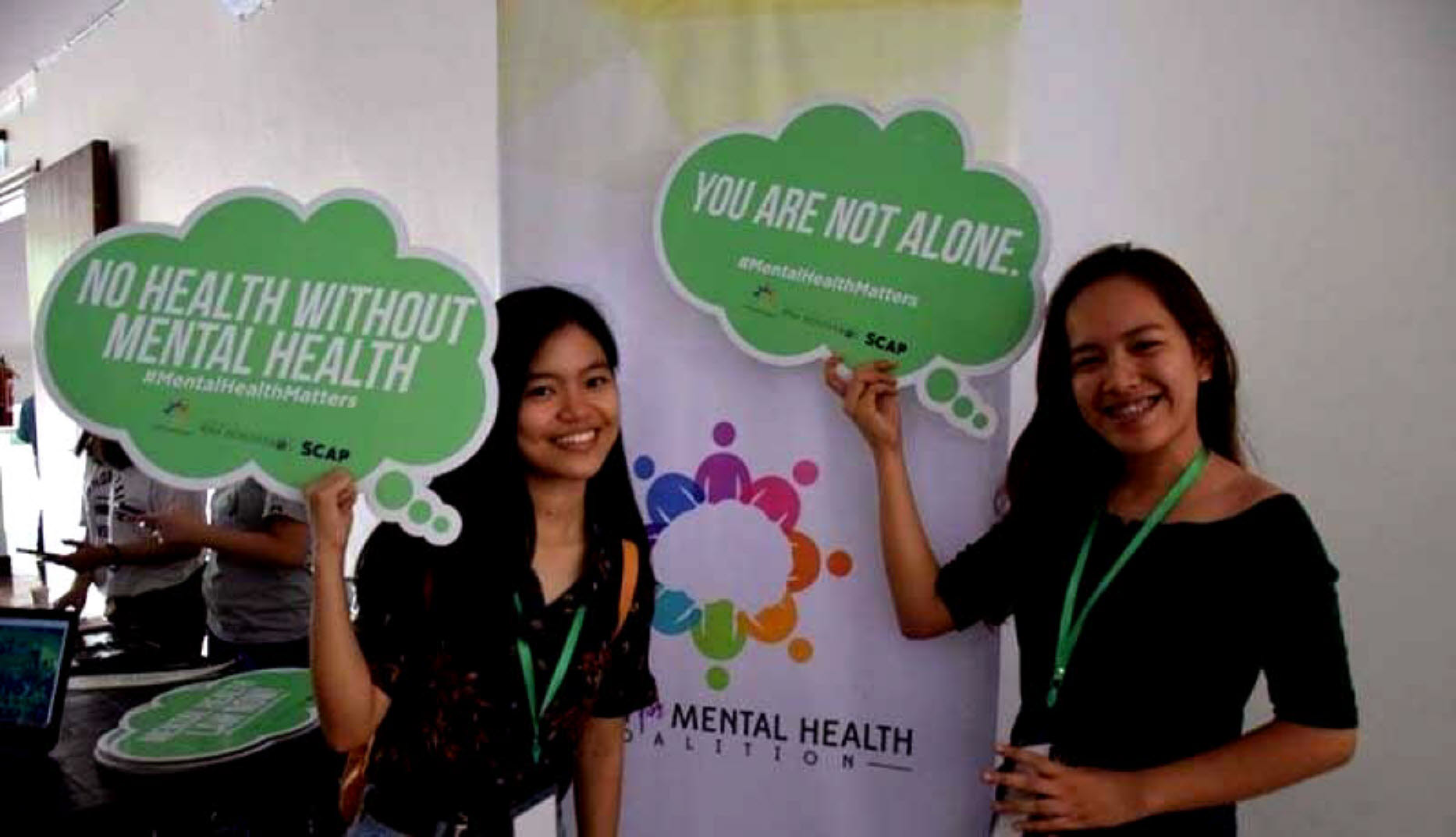

Scroll down to see ways to cope, resources, and how to help others that may be struggling

#MayisMentalHealthAwarenessMonth, and we want you to know you’re not alone.
We’re working for you to break down several different tools, resources, and facts on #mentalhealth, from how you can cope with stress to ways to get help for someone in crisis.
Ways to cope with #stress
It’s something that you might not realize you’ve built so much of: #stress. While there are plenty of things in life out of your control, you are always able to choose the way you respond to them.
The #CDC’s #MentalHealth website offers several different ways to cope that you can implement into your daily life:
- Take care of your body
- Get enough sleep
- Fuel your body with nutritious foods
- Get up and move (exercise, go for a walk, stretch, and more)
- Limit #alcohol intake, avoid using #drugs, and avoid smoking
- Follow through with regular appointments and check-ups
- Take time for yourself to unwind, unplug from #socialmedia, and hold off on reading or watching the news
- Reach out and connect with others
Coping with #stress in a healthy way can help you and the people around you, the #CDC said.
#James Donaldson notes:
Welcome to the “next chapter” of my life… being a voice and an advocate for #mentalhealthawarenessandsuicideprevention, especially pertaining to our younger generation of students and student-athletes.
Getting men to speak up and reach out for help and assistance is one of my passions. Us men need to not suffer in silence or drown our sorrows in alcohol, hang out at bars and strip joints, or get involved with drug use.
Having gone through a recent bout of #depression and #suicidalthoughts myself, I realize now, that I can make a huge difference in the lives of so many by sharing my story, and by sharing various resources I come across as I work in this space. #http://bit.ly/JamesMentalHealthArticle
Find out more about the work I do on my 501c3 non-profit foundation
website www.yourgiftoflife.org Order your copy of James Donaldson's latest book,
#CelebratingYourGiftofLife:
From The Verge of Suicide to a Life of Purpose and Joy

www.celebratingyourgiftoflife.com
#Depression and #suicideawareness
#Suicide was responsible for 48,183 deaths in 2021, which is about one death every 11 minutes, according to the #CDC.
In 2021, there were 46,412 suicides among #adults, the #CDC said. For every #suicide death, there were about 3 hospitalizations for #self-harm, 8 ER visits related to suicide, 38 self-reported #suicideattempts, and 265 people who considered #suicide.
If you or someone you know is struggling – you’re not alone. Find out how you can get help or help others below.
Need help now?
If you or someone you know is in crisis and needs help immediately, you can reach out to a 24/7 center.
You can reach the #NationalSuicideandCrisisLifeline by calling or texting #988, or through chat here.
The #SubstanceAbuse and #MentalHealthServices Administration offers a Disaster Distress Helpline. Call or text 1-800-985-5990 to get help (press 2 for Spanish).
A local resource, Blue Ridge #BehavioralHealthcare also has a 24-hour crisis hotline, which you can reach at 540-981-9351.
Warning signs
When it comes to warning signs, no one size fits all.
According to Region One #SuicidePrevention Coordinator, Jordan Brooks, small changes can have a ripple effect.
“Ultimately just noticing changes and how those changes are impacting them because everyone is different and everybody’s story and experiences are different. Things like sleep habits, appetite mood, and withdrawal from others, family, and friends. Not doing things they typically liked to do,” Brooks told 10 News in an earlier interview.
The following list is of warning signs noted by the #CDC:
- Talking about being a burden,
- Being isolated,
- Increased #anxiety,
- Talking about feeling trapped or in unbearable pain,
- Increased #substanceuse,
- Looking for a way to access lethal means,
- Increased anger or rage,
- Extreme mood swings,
- Expressing #hopelessness,
- Sleeping too little or too much,
- Talking or posting about wanting to die,
- Making plans for #suicide.
You can read more on warning signs and how to help someone at risk by clicking here.
How you can help
There are a range of factors that can contribute to #suicide, according to the #CDC. Now - how can you help?
First, the #CDC says it’s good to know the warning signs. You can review their list above and see more here.
Secondly, know where someone can go to get help. Whether it’s via an online, 24/7 crisis hotline or a local healthcare provider, connecting with a #mentalhealthprofessional can be beneficial, officials said.
#BeThe1To, a message developed by the #988SuicideandCrisisLifeline, suggests five action steps that can help you communicate with someone who is suicidal:
- Ask and Listen: When asking them how they feel, you’ll want to be direct – asking “Are you thinking about #suicide?” sends a message that you’re open and willing to talk, then listen about #suicide in a supportive way. You can also ask how you can help, or how they are hurting, but never make a promise that you’ll keep thoughts of #suicide a secret.
- Be there: Being there with someone can look several different ways, from a phone call to being physically present, just being there shows your support, but don’t make any plans or promises you can’t keep.
- Help keep them safe: Once you’ve asked them about #suicide directly, you can consider other factors that would impact their safety. Learning more about a previous attempt(s), if any, as well as plans and other details can help you determine level of danger. If there is a firearm nearby and the person is very serious about attempting #suicide, it may be necessary to call 911 or get emergency help. #988 serves as a 24/7 crisis hotline for the person, and there are more immediate crisis options above.
- Help them connect: One way to help someone find connections and support is to develop a safety plan, which can include people to get in touch with when they’re in crisis. Think of it as helping them establish a safety net.
- Follow up: Like any other interaction, you’ll want to follow up with the person you care about. You can call, leave a message, shoot them a text – really anything to check in and let them know you’re still there for them or thinking of them.
If you’re interested in reading the how, why, and more research behind the five action steps, you can click here.
Finding treatment
Thanks to the #CDC, finding #mentalhealthcare in your area is streamlined and simple. By clicking here, you can view the #CDC’s organized list of resources and tools to help you get connected with a #mentalhealthprofessional.
If you’re looking for treatment centers, you can do so via any of the four links, the #CDC says:
- On FindTreatment.gov, you can find a provider treating #substanceusedisorders, addiction, and #mentalillness,
- On #AmericanPsychiatricAssociationFoundation, you can find a #Psychiatrist near you,
- On American Academy of #Child and #Adolescent Psychiatry you can find a #Psychiatrist for #children and #adolescents,
- On #AmericanPsychologicalAssociation, you can find a #Psychologist

https://standingabovethecrowd.com/2023/06/jamesdonaldson-on-mentalhealth-mentalhealthresources-how-to-help-someone-at-risk-of-suicide/


No comments:
Post a Comment